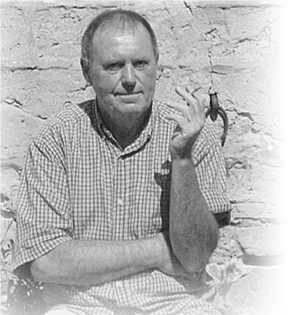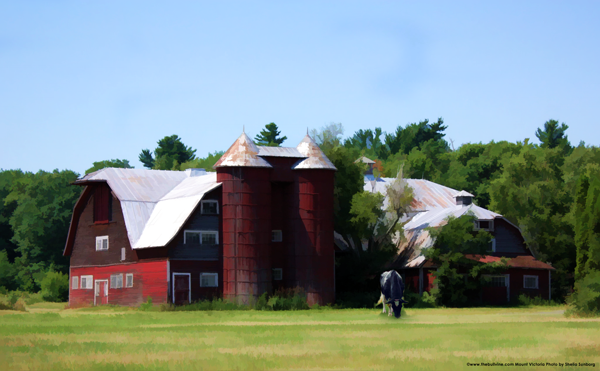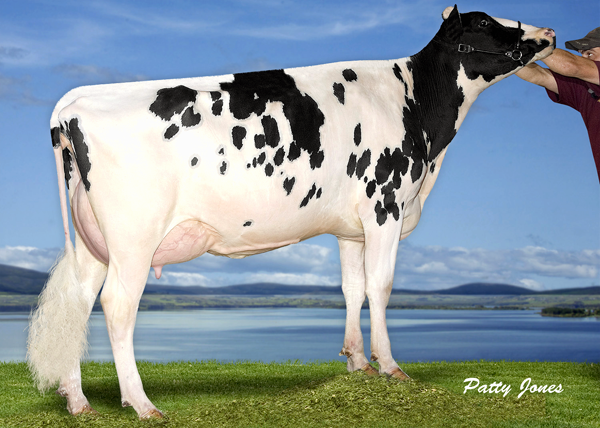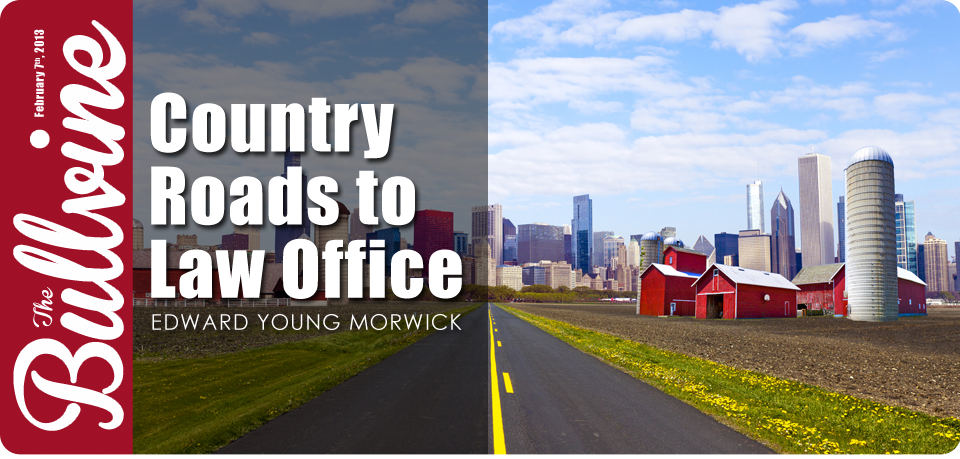
Edward Young Morwick
Edward Young Morwick, author, cattle breeder and lawyer, was born in 1945 on the Holstein dairy farm of his father, Hugh G. Morwick. Impressions from those childhood days have had a tremendous impact on his journey through life. He recalls, “One of my first memories involves my mother carrying me in her arms down the aisle in front of the cows. She would stop in front of each cow, and I would lean over and pat the cow on the muzzle.” This is a familiar beginning for many country boys but then the picture changes. “My father died when I was six years of age and my mother Jean went back to teaching school.” No doubt there were hard turns ahead, however, Edward’s connection to Holsteins had already been forged. He clarifies the process. “I bought my first Holstein calf in 1953 when I was seven years of age. I have owned Holsteins ever since, except for a period in the late 1960’s to mid-1970 when I was attending university and law school.”
It’s Relative To His Case
From a very early age, Edward was interested in the lineage of both cattle and family. The connections were strong ones. “My maternal grandfather was William Young who bred the Ingleneuk Holsteins at Alberton, Ontario. He had one of the better Holstein farms of the era. He sold a bull to Lady Eaton named Ingleneuk King Hengerveld. Lady Eaton sold one of his daughters to Mrs. Edith Dilworth and she became the fifth dam in the maternal line of Osborndale Ivanhoe.”
Morwick’s uncle, James R. Henderson of Strathaven Farm in Kingston, Ontario made significant contributions to cattle breeding as is noted in Edward’s book, “The Chosen Breed.” Edward expands on the list of achievements of this well-respected cattle Judge and Master Breeder. “Uncle Jim bred Strathaven Top Grade, the sire of Glenvue Nettie Jemima (EX-13*). He also bred Inka Supreme Reflection, who was a Rosafe herd sire. “Nettie Jemima” was dam of Rosafe Magician and Rosafe Citation R. who set records for siring All-American gets of sire. Also, Inka Supreme Reflection is behind both Pawnee Farm Arlinda Chief and Round Oak Rag Apple Elevation.” A wonderful resume pointed to with pride. “My Uncle Jim Henderson is one of the few Canadians who bred an animal in Elevation’s pedigree. Also, he bred the sires of dams back in the tenth to twelfth generations of the pedigree of Braedale Goldwyn.”
And The Law Won
With such solid role models, you know there has to be a story to explain Edward’s choice of law as a career. “I ended up becoming a lawyer as follows: I entered University of Guelph in 1968. It was my intention to be a journalist. My ultimate goal was to be a columnist on either the New York Times or Chicago Tribune. In my second year at university, it became apparent that I would win the Gold Medal in English Literature. At that point I received an invitation from Osgoode Hall Law School to enroll there, in spite of the fact that I had not completed my Bachelor of Arts. When I entered Osgoode Hall in the fall of 1970 I was one of four students out of a beginning class of 306 who did not have a bachelor’s degree.
In my first year at law school, I ended up second in a class of 306. That fact, plus my entire academic record at law school, led to my being hired by Fasken & Calvin, a Bay Street law firm in Toronto.”
Weighing the Pros and Cons
The story continues. “I chose a career in law in preference to one that would involve teaching English Literature at the high school or college level because I thought the practice of law would be much less restrictive and would give me an opportunity to meet a lot of interesting people. Also, the practice of law requires a great deal of writing, which satisfied my compulsion to write. However, it was my wish to practise criminal law so I set up my own practise in Hamilton in February of 1975. I started in Hamilton because it was close to my home at Jerseyville, and also was a “hot-bed” of crime, so I knew I would be busy.” One wonders if Mr. Morwick will pen a legal book at some point in the future.

Morwick’s book’s The Chosen Breed and The Holstein History are must reads for those wanting to learn more about just who and how the North American Holstein breed has developed (Digital Painting of Mount Victoria Farms with Hanover Hill Starbuck standing in front)
Penned For Posterity
It took ten years for Edward to write the highly praised book “The Chosen Breed”. He uses very few words when referring to his inspiration. “The reasons I wrote The Chosen Breed and The Holstein History can be summed up in the words recognition, remembrance and gratitude. Further, I love to write and I love the Holstein breed and the people who support it.” A wonderful opening statement which he expands on in the book itself. Those who have read his writing go beyond the author’s reticence. Richard Keene, of Keeneland Farms in Gilbertsville, N.Y. exclaims, ““Wow! What a great history. Certainly an enjoyable must read for the real student of the breed.” Dallas Burton of Berryton, Kansas supports that motion. “Tremendous job. Thank you for taking the time and the remarkable effort in accounting these 125 years of our history.” And Richard McNamara of Stratford sums it up saying “I’m surprised you could produce this book in only ten years with all that it takes to get it done. Really enjoyed the human interest and humour.”

Misty Springs Shottle Satin VG-86-2YR-CAN
former #1 GLPI Cow of the Breed
A Jury of His Peers
“In dealing with the greatest sires in history, you need to focus on eras.” says Edward. Before elaborating, he admits a personal favorite. “One of my personal favorites is Picston Shottle as he sired my cow, Misty Springs Shottle Satin, who was No. 1 genotype cow when the designation was first introduced in 2009.” Having said that, he gives a brief for consideration. “The student should not ask ‘Who was the greater bull, Johanna Rag Apple Pabst or Hanoverhill Starbuck?’ Starbuck obviously sired offspring who were superior to those of J.R.A.P., but fifty years later. The proper way to frame the question would be to ask ‘Was Starbuck as great and as influential a sire in his era as J.R.A.P. was in his?’ And the answer would be a resounding ‘No!’”. Lest the Jury be confused, lawyer Morwick presents his arguments. “In the early period, the great sires were Netherland Prince, Billy Boelyn, Mooie and Conqueror. Come forward three decades to Sir Pietertje Ormsby Mercedes. And after him came Pontiac Korndyke and Hengerveld DeKol. In the 1920’s you had Johanna Rag Apple Pabst, one of the great sires of all-time, some say the greatest; and in the same period was Sir Bess Ormsby Fobes, who left remarkable sons. And then there was Wisconsin Admiral Burke Lad and his descendant, Wis Burke Ideal. Important bulls in the 1950’s were A.B.C. Reflection Sovereign and Osborndale Ivanhoe. In the modern era, the most influential bulls were Pawnee Farm Arlinda Chief and Round Oak Rag Apple Elevation. Carlin-M Ivanhoe Bell also cast a broad influence, as did To-Mar Blackstar, Walkway Chief Mark, S-W-D Valiant and O-Bee Manfred Justice. In the recent past, among the best bulls were Regancrest Elton Durham, Picston Shottle and Braedale Goldwyn.” The defense rests.
Raising The Bar
Are there actually role models for authors who are also lawyers? Edward says his were available early on. “In high school years I worked on the farm of my neighbor, Richard Schleissner, and also for Agro Brothers, doing the usual farm work and also helping to take out their show herds. The biggest influences on my life were the dairy farmers who lived in the community where I grew up, among whom I could name Douglas Lovering, Joe Loewith and Lloyd Hunter. I worked for all of them. They taught me the value of hard work. None of them would undertake a job unless perfectly prepared to complete it to the very best of his ability.” This set the foundation which was built upon with Edward’s legal career. “In later years, the biggest influence on my life was Angelo Agro of Agro Bros. Ltd., for whom I acted as attorney for a period in excess of 20 years. He taught me that you could be an honest businessman and still make a lot of money. He was an extremely hard worker, a brilliant strategist and possibly the best judge of human character I ever knew. Mr. Agro had the ability to talk for two or three minutes to a man he’d never met before, and he could pretty well tell you, quite accurately, what kind of man he was.” These are also excellent skills for a lawyer as well. It’s no surprise that his mentor also considered Edward to be exceptional.
The Bullvine Bottom Line
It’s Bovine Legal – Edward Y. Morwick has taken a one-of-a-kind journey from those visits to the barn as a baby. He credits his mother with teaching him a key lesson, “She taught me very early on that a person can accomplish pretty well anything he sets his mind to, if he tries hard enough.” Edward has done that. His legacy – book and bovine – will stand beyond a reasonable doubt!
To find out how you can get a copy of Edward’s latest book “The Holstein History” click here.















Leave a Reply
You must be logged in to post a comment.